Understanding Futures Market Structures: Decoding Contango and Backwardation
Welcome to a deep dive into the fascinating world of futures markets. If you’re just starting your journey in investing or perhaps looking to refine your understanding of technical analysis, you’ve likely encountered terms that seem a bit opaque. Today, we’re going to demystify two crucial concepts that define the very shape of the futures landscape: Contango and Backwardation.
Think of the futures market not just as a place where you bet on future prices, but as a sophisticated mechanism reflecting collective expectations, costs, and benefits associated with holding or using an asset over time. The relationship between the price of a futures contract for a certain delivery date and the current price of that asset right now – the spot price – tells us a lot about the underlying market dynamics. This relationship is what Contango and Backwardation describe. Understanding them is not merely academic; it’s fundamental to successful trading, hedging, and investing in commodities and other futures-traded assets.
Why is this so important? Because the shape of the forward curve – a line plotting futures prices against their respective maturities – isn’t static. It breathes, shifts, and contorts based on powerful economic forces. Whether a market is in Contango or Backwardation impacts everything from the cost of hedging for a producer to the performance of a commodity-linked ETF in your portfolio. So, let’s peel back the layers and understand these vital market structures.
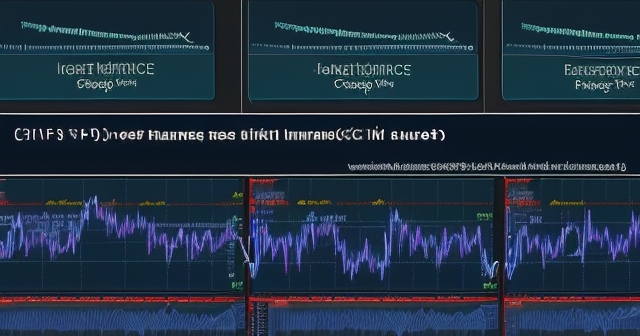
At its core, the difference between Contango and Backwardation lies in how the price of a futures contract compares to the current spot price of the underlying asset, or more precisely, to the market’s expectation of the future spot price.
Let’s start with Contango. We say a market is in Contango when the price of a futures contract for a future delivery date is higher than the current spot price of the underlying asset. Imagine looking at prices for crude oil: if a contract for delivery next month is $80 per barrel, but the contract for delivery in six months is $85 per barrel, and the current spot price is $78, that market is exhibiting Contango. This implies that the further out in time you go, the higher the futures price. When plotted on a graph, this creates an upward-sloping forward curve. This is often referred to as the “normal” futures market structure, especially for storable commodities, though calling it “normal” can sometimes be misleading.
- Contango indicates a futures price higher than the spot price.
- Usually reflects the cost of carry, including storage and financing costs.
- May suggest expectations of future price increases.
What does this premium in futures prices represent? Often, it reflects the cost of carry – the expenses associated with holding the physical asset from now until the future delivery date. Think about it: if you buy a barrel of oil today and plan to sell it via a futures contract in six months, you incur costs like storage (where do you put it?), financing (did you borrow money to buy it?), and insurance (what if something happens?). The futures price needs to be high enough to cover these costs and potentially offer a small profit for the holder. Therefore, in a Contango market, the futures price typically approximates the spot price plus the cost of carry.
Now, let’s look at Backwardation. This is the opposite scenario. A market is in Backwardation when the price of a futures contract for a future delivery date is lower than the current spot price of the underlying asset. Using the oil example, if the spot price is $82 per barrel, but the contract for delivery in three months is $80, and the contract for six months is $78, the market is in Backwardation. Here, the further out you look, the lower the futures price. Plotting these prices creates a downward-sloping, or inverted, forward curve.
- Backwardation indicates a futures price lower than the spot price.
- Driven by the convenience yield for immediate availability of physical assets.
- Reflects scarcity or high immediate demand in the market.
Why would someone agree to sell something in the future for *less* than it’s worth today? This situation is often driven by a concept called convenience yield. Unlike financial assets that might pay dividends or interest, holding a physical commodity can offer a non-monetary benefit or “yield” – the convenience of having the physical asset available for immediate use. For instance, an oil refiner needs a steady supply of crude oil to keep operations running. Having physical inventory provides operational flexibility and insurance against potential supply disruptions. If physical supply is tight, the value of having that immediate access (the convenience yield) can be high. This high convenience yield makes owning the physical asset more valuable than owning a futures contract for future delivery, thus driving the spot price *above* the futures price. Backwardation signals a premium for immediate availability.
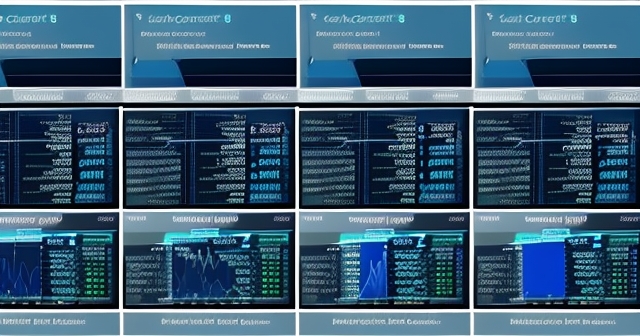
Regardless of whether a market is in Contango or Backwardation, there’s a fundamental principle that governs futures prices as they approach their expiration: convergence. As a futures contract gets closer and closer to its maturity date, its price will inevitably converge with the spot price of the underlying asset. On the day of expiration, the futures price and the spot price must be the same (or nearly the same, accounting for minor transaction costs).
Think about it logically. If, moments before expiration, a futures contract to buy a barrel of oil was priced significantly differently from the spot price of a barrel of oil, a massive arbitrage opportunity would exist. An arbitrageur could simultaneously buy the cheaper asset and sell the more expensive one, locking in a risk-free profit. For example, if the futures price was $80 and the spot price was $82, you could sell the spot oil at $82 and buy the expiring futures contract at $80, pocketing the $2 difference per barrel instantly. These kinds of discrepancies are quickly exploited by market participants, and this very activity drives the futures price towards the spot price as expiration looms.
This concept of convergence is crucial because it means the difference between the futures price and the spot price – often called the basis – tends to zero at maturity. The shape of the forward curve (Contango or Backwardation) reflects the market’s expectations and costs *until* that point of convergence. A Contango market implies that futures prices are expected to *fall* towards the current spot price (or expected future spot price) as the contract approaches maturity. Conversely, a Backwardation market implies that futures prices are expected to *rise* towards the current spot price (or expected future spot price) as maturity nears.
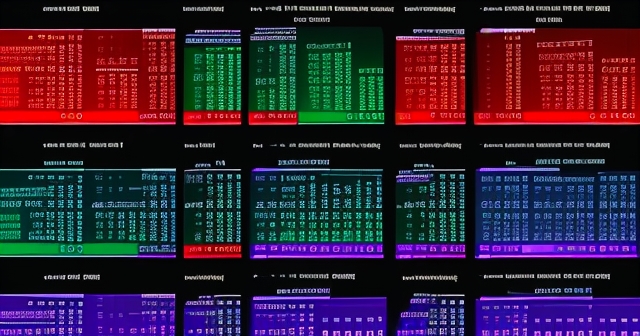
As we touched upon, the Cost of Carry is a primary force shaping the futures curve, particularly contributing to a market being in Contango. For most storable physical commodities, holding the asset incurs real costs. Let’s break down the components that typically make up the cost of carry for a physical commodity:
| Component | Description |
|---|---|
| Storage Costs | Costs associated with holding large quantities of an asset, such as oil or grains. |
| Financing Costs | Interest costs on borrowed money used to acquire the asset. |
| Insurance Costs | Cost to insure against risks like theft or damage. |
| Spoilage or Depreciation | Value loss due to degradation of certain physical commodities over time. |
For financial assets, the cost of carry works slightly differently. Holding a stock (which a futures contract might be based on) doesn’t have storage costs, but it has financing costs (borrowing to buy the stock). However, holding a stock might also provide income in the form of dividends. Holding a bond provides interest payments. For financial assets, the net cost of carry is usually the financing cost minus any income received (dividends or interest). If the financing cost exceeds the income, the net carry is positive, contributing to Contango. If the income exceeds the financing cost, the net carry is negative, which could theoretically lead to backwardation in financial futures, though this is less common and often termed “inverted carry.”
In a perfectly efficient market, and ignoring convenience yield for a moment, the futures price for a non-perishable, easily storable commodity would be equal to the spot price plus the full cost of carrying that commodity until the futures expiration date. Any significant deviation would be an arbitrage opportunity. For instance, if the futures price is *less* than spot plus cost of carry, you could buy the spot asset, incur the carry cost, and simultaneously sell the higher-priced futures contract, locking in a profit. If the futures price is *more* than spot plus carry, you could sell the spot asset you hold (or short it), invest the proceeds (earning financing income), and buy the cheaper futures contract, again profiting.
So, high costs associated with storing and holding a commodity tend to push the futures curve into Contango. If storage tanks are full, storage costs might rise, further contributing to a Contango market structure. This is a fundamental concept taught in finance and economics, underpinning the relationship between spot and futures prices for storable goods.
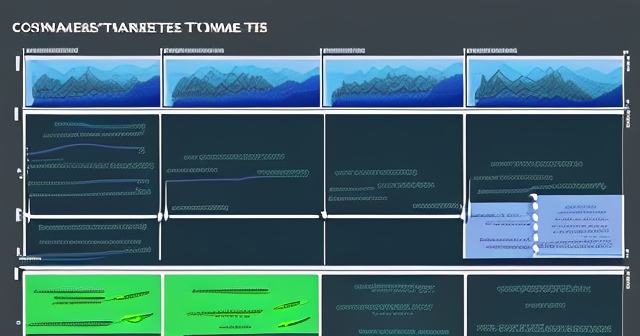
While Cost of Carry helps explain the premium in Contango, the discount in Backwardation is often attributed to Convenience Yield. This is a more abstract concept, representing the implied benefit or “yield” that comes from owning the physical commodity right now, rather than owning a piece of paper (the futures contract) that promises delivery later.
Consider the refiner needing crude oil we mentioned earlier. Their production line runs on a continuous flow of oil. If they don’t have physical inventory readily available, they risk shutting down, which is incredibly costly. The ability to draw on physical stock immediately is valuable. This value is the convenience yield. It’s not a cash payment; it’s the avoidance of potential costs or disruption, or the ability to seize immediate opportunities.
The convenience yield tends to be high when inventories of the physical commodity are low. Why? Because when the physical asset is scarce, having it becomes particularly valuable. This high demand for immediate physical delivery bids up the spot price relative to future delivery prices, pushing the market into Backwardation. Conversely, when inventories are abundant, the need for immediate physical stock is less pressing, the convenience yield is low (or even zero), and the market is more likely to be in Contango, driven primarily by the cost of carry.
Think of it like this: in a Contango market, the incentive is to *store* the commodity for future sale because the future price is high enough to cover storage costs and potentially offer a profit. This tends to happen when current supply is ample and storage capacity is available. In a Backwardation market, the incentive is to *consume* or *use* the commodity now because the present price is higher than the future price, reflecting scarcity and the high value of immediate availability. This tends to happen when current supply is tight or there’s strong immediate demand.
While Cost of Carry and Convenience Yield are the two main theoretical components explaining the difference between spot and futures prices (the basis), their relative strength dictates whether a market is in Contango or Backwardation. If the Cost of Carry is the dominant factor, the market is likely in Contango. If the Convenience Yield is dominant, the market is likely in Backwardation.
The role of supply, demand, and market sentiment is significant in shaping future prices as well. Let’s take a closer look at how these key drivers interact with the futures market structures.
| Driver | Impact on Futures Market |
|---|---|
| Current Supply Tightness | Drives up spot prices and can lead to Backwardation. |
| Expected Future Supply Increase | May result in downward pressure on futures prices, supporting Backwardation. |
| High Current Inventory | Can lead to Contango due to reduced immediate demand. |
| Expected Future Demand Increase | May lead to Contango as future prices are bid up. |
Beyond the tangible factors of supply, demand, and costs, market sentiment and expectations also play a significant role. If traders collectively believe prices are heading higher in the future due to macroeconomic factors or technical signals, they will buy distant futures contracts, potentially creating or steepening Contango. Conversely, if they anticipate future price declines, they might sell distant contracts, contributing to Backwardation or flattening the curve.
Macroeconomic factors like inflation can impact the cost of carry (increasing financing costs) and also influence broader price expectations. Geopolitical events, weather patterns, and even regulatory changes can swiftly alter supply or demand dynamics, leading to rapid shifts between Contango and Backwardation. The forward curve is, therefore, a dynamic, living indicator reflecting a complex interplay of current realities and future forecasts.
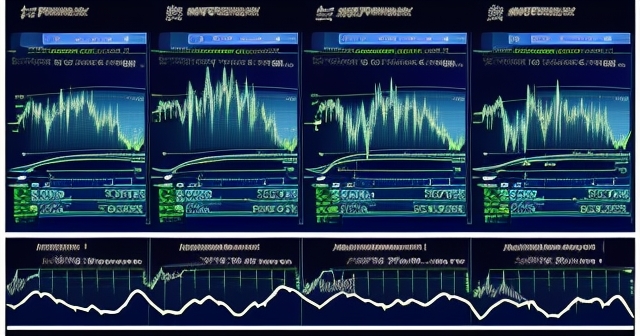
Beyond just defining the price structure, Contango and Backwardation can act as valuable market signals. While not predictive guarantees, they offer insights into the current state and perceived future direction of a market based on the factors we’ve discussed.
- Contango as a Signal:
- Often seen in markets with ample current supply and sufficient storage capacity.
- Can suggest that the market expects future prices to be higher than the current spot price, primarily to compensate for the cost of holding the asset.
- Sometimes interpreted as a “normal” market structure, reflecting the base costs of holding. However, a *steep* Contango can signal very high carry costs, perhaps due to financing or storage constraints, or strong expectations of significant future price increases (though the cost of carry explanation is more common for the structure itself).
- For non-storable commodities or financial futures, Contango might reflect expectations of higher prices or positive carry (financing yield > dividend/interest yield).
- Backwardation as a Signal:
- Often seen in markets experiencing current supply tightness or high immediate demand.
- Strongly suggests that the market places a premium on immediate availability (high convenience yield).
- Can be interpreted as a signal of current scarcity relative to current demand.
- The market expects futures prices to *fall* relative to the spot price as the premium for immediate use diminishes over time or as future supply/demand conditions are expected to ease.
- This structure is sometimes referred to as “normal backwardation,” based on theories suggesting hedgers (producers) are net sellers of futures and speculators (buyers) require a discount for taking on risk, leading to futures prices being below the expected future spot price. However, the convenience yield explanation is more widely applicable across various commodities.
It’s crucial to remember that these are *signals*, not certainties. A market can be in Contango even if prices are expected to fall slightly, as long as the expected future spot price is still above the current spot price plus the cost of carry. Similarly, Backwardation can occur even with expectations of flat or slightly rising prices, if the convenience yield is sufficiently high. The curve shape is a snapshot in time, reflecting the balance of these complex forces.
Analyzing the *steepness* of the curve also adds nuance. A very steep Contango suggests high carry costs or strong expectations of future price increases. A very steep Backwardation suggests significant current supply constraints and a high premium for immediate delivery.
Understanding Contango and Backwardation is not just theoretical knowledge; it has significant practical implications for anyone involved in futures markets.
- For Hedgers: Producers looking to lock in a price for their future output (e.g., a farmer selling a corn futures contract) or consumers looking to lock in a price for future input (e.g., an airline buying jet fuel futures) must understand the prevailing market structure. Hedging in a Contango market means selling futures contracts at a premium to the current spot price, which initially looks favorable. However, as their contract approaches maturity and converges to the (likely lower) spot price, they might experience a loss on the futures position, which is offset by the better-than-spot price they secured. Hedging in Backwardation means selling futures at a discount to the current spot, potentially locking in a lower price than today’s spot, but it protects them if spot prices fall significantly in the future. For consumers, buying futures in Contango means paying a premium, while buying in Backwardation means getting a discount relative to spot.
- For Speculators: Traders betting on price movements need to consider the curve shape. A long position in a Contango market means buying a futures contract that is expected to lose value relative to the spot price as it approaches maturity (the price “rolls down” the curve). A long position in a Backwardation market means buying a contract expected to gain value relative to spot as it approaches maturity (the price “rolls up” the curve). This leads us to a critical concept: Roll Yield.
Many investors gain exposure to commodities through financial instruments like Commodity ETFs or ETNs, which often track indices composed of futures contracts. These funds typically need to maintain exposure by “rolling over” expiring futures contracts into later-dated contracts. This is where Contango and Backwardation directly impact investor returns.
- In a Contango market: When a fund holds a futures contract nearing expiration, it sells that contract and buys a later-dated contract. Since the later-dated contract is trading at a premium (higher price) in a Contango market, the fund sells low (relatively) and buys high. This results in a *negative roll yield*, which erodes returns. Even if the spot price of the commodity remains flat or rises slightly, the drag from rolling futures in Contango can lead to losses for the ETF investor. This phenomenon is often cited as a significant reason why commodity ETFs underperform the spot price of the underlying commodity over time in Contango markets.
- In a Backwardation market: The opposite happens. The fund sells the expiring contract (closer to the higher spot price) and buys a later-dated contract trading at a discount (lower price). Selling high and buying low generates a *positive roll yield*, which adds to the fund’s returns. In a Backwardation market, a commodity ETF can outperform the spot price due to this positive roll yield.
Therefore, understanding Contango and Backwardation is vital for investors considering commodity-linked products that utilize futures. It’s not just about the direction of the spot price; the structure of the futures curve significantly affects the overall return profile.
The infamous case of Metallgesellschaft in the mid-1990s serves as a stark historical example of the risks associated with mismanaging futures positions in changing market structures. This German conglomerate suffered massive losses partly due to a hedging strategy involving short-dated futures contracts in oil that worked well in backwardation but became incredibly costly when the market shifted into a steep contango. As their short-dated contracts expired, they had to roll them into much higher-priced longer-dated contracts, incurring massive losses. This highlights the critical need for sophisticated risk management when dealing with futures and volatile market structures.
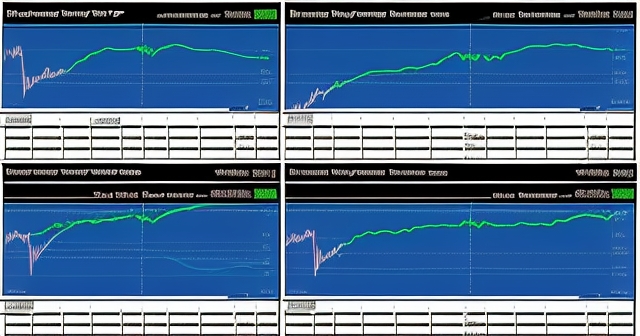
Looking at historical price data provides concrete examples of Contango and Backwardation in action across various markets. While crude oil is perhaps the most frequently cited example due to its liquidity and volatility, these structures appear in numerous commodities and financial futures markets.
- Crude Oil: The oil market frequently oscillates between Contango and Backwardation, often driven by changes in global supply (OPEC decisions, geopolitical events, shale production levels) and demand (economic growth, seasonal factors). During periods of perceived oversupply or high inventories, the market is typically in Contango. Conversely, during periods of tight supply or high demand for immediate delivery, Backwardation is common. For instance, the market was in deep Contango during the 2008-2009 financial crisis and again during the initial phase of the COVID-19 pandemic (April 2020) as demand plummeted and storage filled up. Conversely, periods of tight supply have seen the market switch firmly into Backwardation.
- Agricultural Commodities: Markets like corn, soybeans, and wheat also exhibit these structures, heavily influenced by harvest cycles, weather patterns, and storage availability. Just before a large harvest, the market might be in Backwardation as current stockpiles are low (high convenience yield). After the harvest, with new supply available and storage needed, the market might shift into Contango (high cost of carry).
- Metals: Industrial metals like copper and aluminum, as well as precious metals like gold, also show Contango or Backwardation based on inventory levels, production issues, and industrial demand. High demand for immediate physical metal can drive Backwardation.
- Financial Futures: Even futures on financial assets like interest rates or currencies can exhibit patterns analogous to Contango or Backwardation, though the drivers (interest rate differentials, financing costs minus income like dividends) are different from physical commodities.
Studying the historical forward curves of different assets on exchanges like the CME Group (which includes NYMEX, COMEX, CBOT, and CME) provides valuable insights. Financial data providers like Barchart Solutions or historical data archives from exchanges can show how the curve shape has changed over time, reflecting the evolving market fundamentals and sentiment. Regulators like the CFTC (Commodity Futures Trading Commission) oversee these markets, ensuring transparency and integrity, which is foundational to the trust participants place in futures pricing.
Observing these shifts historically underscores that neither Contango nor Backwardation is a permanent state. Markets are dynamic, and understanding *why* a market is in a particular state requires analyzing the underlying economic conditions, costs, yields, and expectations at that moment. This historical perspective reinforces the EEAT principle by showing how real-world events and economic forces manifest in observable market structures.
Now that we’ve explored the theoretical and practical aspects of Contango and Backwardation, you might wonder how you can participate in these markets or apply this knowledge. Accessing futures markets or related instruments typically involves opening an account with a brokerage that provides access to exchanges like the CME Group or Intercontinental Exchange (ICE).
Beyond direct futures trading, many retail investors gain exposure through derivatives like Contracts For Difference (CFDs) that track futures prices or commodity ETFs/ETNs that hold futures contracts. While CFDs offer leverage and flexibility, they carry risks, and their pricing often mirrors the underlying futures market structure, including the effects of Contango and Backwardation on the underlying futures.
Choosing the right platform is crucial for executing your trading or hedging strategies effectively. You need robust tools, reliable data feeds, and a clear understanding of the costs involved, including potential impacts of rolling futures positions if you’re using products based on futures indices.
If you’re navigating the world of online trading platforms, especially if you are considering trading instruments that derive their value from underlying assets like commodities or currencies via CFDs, platform choice is key. Many platforms offer access to a wide range of global financial instruments, including commodities, indices, and currencies. Evaluating features like available instruments, trading costs (spreads, commissions), platform technology (MT4, MT5, proprietary platforms), regulatory compliance, and customer support is essential for a positive trading experience.
If you’re looking for a platform that supports a wide array of instruments, including CFDs that track commodities and indices, it’s wise to research brokers known for their technology and execution. Selecting a platform that aligns with your trading goals and provides the tools you need for analysis and risk management is a critical step.
If you’re considering starting Forex trading or exploring more CFD instruments, then Moneta Markets is a platform worth considering. Based in Australia, it offers over 1000 financial instruments, suitable for both novice and professional traders.
We’ve journeyed through the concepts of Contango and Backwardation, exploring their definitions, the economic forces that shape them – namely Cost of Carry and Convenience Yield, driven by supply and demand – and their profound implications for market participants.
Understanding these structures is far more than learning technical jargon. It’s about recognizing the signals the market is sending regarding the availability of a commodity, the costs of holding it, and the collective expectations about its future value relative to its present value. Contango tells us futures prices are currently higher than spot, often reflecting holding costs and ample supply. Backwardation tells us futures prices are lower than spot, typically signaling current scarcity and a high value placed on immediate availability.
For you as an investor or trader, whether you’re dealing directly in futures, using commodity-linked ETFs, or trading CFDs based on these assets, being able to identify and interpret Contango and Backwardation provides a critical edge. It helps you understand potential sources of return (positive roll yield in Backwardation) or potential costs (negative roll yield in Contango) beyond the simple directional movement of the spot price. It also highlights the importance of rigorous analysis, combining fundamental insights into supply, demand, and costs with the technical information provided by the forward curve.
The futures market is complex, but by breaking down concepts like Contango and Backwardation, we build a more complete picture. Remember, these are dynamic conditions that require continuous monitoring. The market structure today may be different tomorrow. Armed with this knowledge, you are better equipped to make informed decisions, manage risk effectively, and navigate the opportunities presented by the ever-evolving landscape of futures markets.
contango vs backwardation FAQ
Q:What is Contango in the futures market?
A:Contango occurs when the futures price of an asset is higher than its spot price, often due to the costs associated with storing the asset.
Q:How does Backwardation affect traders?
A:In Backwardation, futures prices are lower than spot prices, which can signal a premium for immediate availability, affecting trading strategies.
Q:What are the implications of roll yield in the context of futures?
A:Roll yield refers to the gains or losses incurred when a futures contract is rolled over; negative roll yield occurs in Contango, while positive roll yield is present in Backwardation.
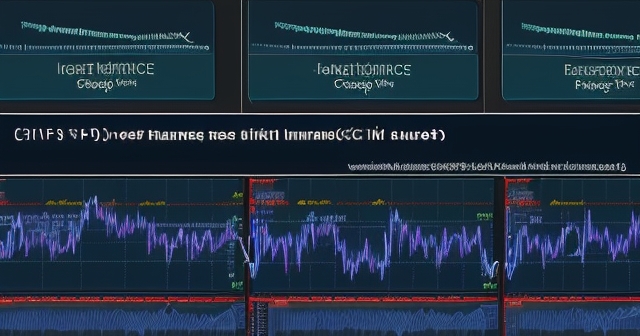
留言